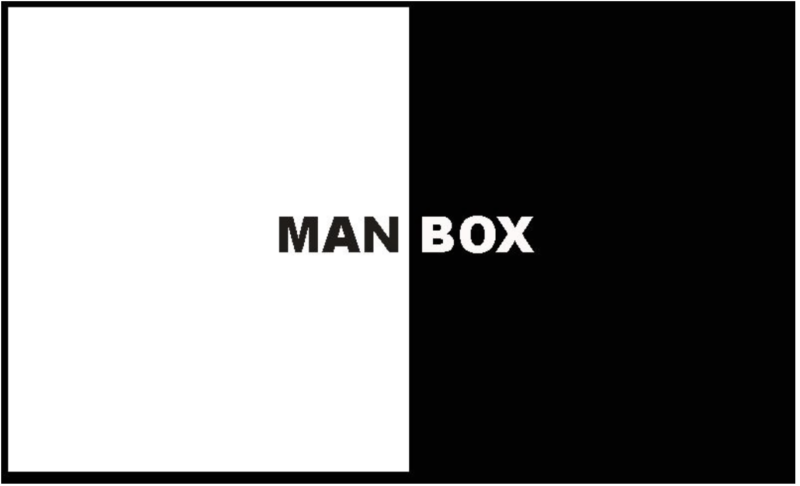
Is no credit better than bad credit? Many people begin to wonder this as they search for new homes, cars and even jobs but don’t understand credit scores or credit reports.
Though, waiting for these events to happen to worry about building credit can put you in a tough spot, as building credit often involves getting started before these events arrive.
Not having credit can prevent you from making certain purchases you want or arrangements you need.
And what happens if you’ve moved past not having credit and instead gave it a go but got behind on payments or failed to establish credit in a good way?
In this case, you’d encounter a poor credit score, exposing you to a more challenging hill to climb back up for building a respectable credit history in the eyes of lenders.
So, this asks the question: “Is it better to have bad credit or no credit at all?” Both limit opportunities you have, but is no credit better than bad credit?
This article will talk about what having thin or no credit is like compared to bad credit. We will also discuss ways to build or rebuild your score, so you don’t have to worry anymore!
No Credit vs. Bad Credit
When you have no credit, that means major credit reporting agencies don’t have a reliable means to predict how well you perform with paying bills or repaying loans, lines of credit or other forms of financing.
You haven’t taken part in any financial arrangements where a financial institution chooses to extend credit to you. As a result, none of the three major credit bureaus has a credit score to assign you.
Bad credit does not amount to the same as no credit. Instead, bad credit means you have made some missteps or even significant mistakes.
This could mean having missed payments, loan defaults or even bankruptcy—the latter of which can stay on your credit report up to seven years or even ten.
The three credit bureaus have assigned you a bad credit score, and you’ll need to consider rebuilding credit through concerted actions.
Is No Credit Better than Bad Credit?
Having no or limited credit history, also called being credit invisible, could mean you haven’t had any interactions with credit.
In 2015, the Consumer Financial Protection Bureau published a report finding that 26 million Americans are “credit invisible“, meaning they have no established credit history nor credit scores to show on their credit reports.
This doesn’t mean these consumers have bad credit, but rather, no credit history for lenders to assess the prospect of repaying what they owe. This can limit you from taking specific actions like buying a car or home with credit.
Having bad credit makes matters worse because you’ve shown you have poor credit habits or that some credit mistakes have gotten the better of you, leading to a low credit score.
This can be from late payments or missing payments altogether to credit card companies, falling into too much credit card debt and overwhelming your credit utilization ratio, or any number of actions that produce a bad credit history.
Having bad credit is worse than no credit in most instances because you’ve shown you can’t handle credit responsibly, and you will need to work harder on improving your credit scores and credit history.
This holds especially true if you’ve filed for bankruptcy, which can take up to seven or ten years to fall off your credit report. Establishing credit and showing a respectable FICO score can change in as little as 3-6 months with a secured credit card.
In both cases, having no credit vs. bad credit limits what you can do. Many routine activities in life require credit scores and a good credit record:
- getting a job
- applying for an apartment
- getting financing on a car
- paying for a cell phone
- higher interest expenses on lines of credit or credit accounts
- higher utility deposits or more extended lock-up periods before receiving your deposit back
You could have a steady income but still appear as a credit risk if you have unestablished credit or bad credit assigned to your name. Thankfully, building credit from nothing or rebuilding it all together can happen with specific actions.
To establish credit, you have several options available to you. Likewise, you can follow these same steps to build credit after racking up a bad credit history.
Related: Secured Credit Card vs. Unsecured: What’s the Difference?
8 Ways to Build No Credit into Good Credit
1. Unsecured Credit Cards
young woman smiling with credit card and smartphone
Unsecured credit cards represent a standard financial product available through banks, credit unions and other service providers.
They work by providing you with a revolving line of credit, meaning you can spend up to an approved amount without making a payment within a monthly billing cycle.
You can pay off the card in full each monthly billing cycle, or you can revolve it to the next month and incur interest on any unpaid balance.
You can make the minimum monthly payment or choose another amount between this and the entire amount due.
Because credit cards carry some of the highest interest rates of any form of credit available, paying off your balance each monthly billing cycle can save you significant amounts of money over time.
Plus, it instills a habit of building a solid credit history and, eventually, a respectable credit score.
Because of the ubiquity of these cards, establishing good money habits pays off significantly through avoided interest expense.
Related:
9 Best Credit Cards for No Credit History: Starter Credit Cards
What is Cash Back on Credit Cards & How Does it Work?
2. Secured Credit Card
Consider a secured credit card as a cousin of an unsecured credit card and an excellent way to learn how to build credit without a credit card.
A secured credit card is a type of credit card that requires you to put down an upfront security deposit, usually equaling the amount of your credit limit.
This cash security deposit helps protect the credit card company from recognizing a loss by issuing you a credit card and failing to receive payments.
A secured card typically works best for individuals with no credit or looking to rebuild bad credit.
The security deposit establishes collateral the credit card issuer may claim in the event of default or failure to make on-time payments. A secured card often represents the first step someone takes to build credit.
Make sure these secured credit cards participate in credit reporting to the main bureaus if you wish to build a good credit score.
Related: Joint Credit Cards: Can They Help Build Credit?
3. Credit Builder Loan
Credit builder loans and credit cards are very different in how you fund and use them, but both are useful for building credit.
These loans function as a tool for people who have low or no credit history. They can use them to begin building up their credit scores by establishing a credit history.
If you build up your score enough, you can qualify for better terms on a credit account, car loan, or other forms of financing.
These loans do not require you to have stellar credit to receive approval, just the income to make payments. They work by depositing money into a bank account and borrowing money and then making repayments.
You’re essentially taking money out of one pocket and putting it in the other. However, you’re doing so with the understanding it builds credit for you.
These loans should help establish better credit limits on a future credit card account, earn a better interest rate, or receive better overall terms on credit.
Typically offered by credit unions or other smaller financial institutions like a community bank, these credit builder loan payments should get reported to the credit bureaus.
In return, this helps you build your credit—though be sure to confirm this!
Related: 4 Best Teen Checking Accounts [Bank Accounts for Teenagers]
4. Authorized User Status
Suppose you become an authorized user on someone else’s credit card account. In that case, the credit card issuer will send a card to the primary cardholder with your name.
The credit card company holds the person who signed up to be the primary account holder responsible for paying charges on their account.
If an authorized user makes purchases on the unsecured card but doesn’t pay toward the balance, they are not responsible for repayment.
Parents wanting to help their children build credit often use this strategy to establish credit and build a credit history for their kids.
Before getting an unsecured card and being added as an authorized user, make sure you and the primary account holder have agreed on whether or not to use the card you receive.
Further, you should determine this ahead of time because any charges that you make will be their legal responsibility, even if you agree to pay them.
Credit card issuers report your balance and payments every month to credit bureaus. So, even if you don’t receive a physical card, it affects your credit in the same way.
If you don’t meet the requirements for having credit cards on your own, having an authorized user status on a cardholder’s account might be beneficial to building positive “payment history,” a credit scoring component.
It may cut the time it takes to get a FICO score—one of the most common credit-scoring models—down to less if you don’t already have a card used by credit bureaus to mark your creditworthiness. Further, it might also get credit cards in your hands sooner than later.
Related:
- What is Credit Card Piggybacking & Does It Help Credit Scores?
- Best Credit Cards for Kids: Building Credit & Money Habits Early
5. Alternate Payment History Appearing in Your Credit Report
A person’s credit history relies on traditional forms of debt repayment and credit accounts factoring into their score:
- revolving loans
- installment loans
- student loan payments
However, the major credit bureaus also offer credit products to incorporate more items into your score. Products like Experian Boost account for actions in your overall credit profile like:
- utility payments
- rent payments
- cell phone payments
By paying rent, utility bills, and rent, you also demonstrate your ability to manage other liabilities. Together, these added items can create a good credit score worth using when applying for a loan or credit card from a bank or credit union.
If you need a short-term boost to your score, you might consider using Experian Boost to add more credit accounts to your credit profile when being evaluated through a credit check.
Related: Best Credit Cards for Students with No Credit
6. Co-Signers on Credit Products
If you can’t become an authorized user on a credit card, you might consider asking someone to become a co-signer on one. Generally harder to find, these types of cards carry a legal responsibility for both account owners.
Authorized users don’t need to face the music if they can’t pay their credit card bill, as the primary cardholder remains liable to the lender.
Having a co-signer credit card works similar to carrying a joint brokerage account or bank account—you both have access to the funds.
However, they differ because joint accounts list both owners as equals, meaning they share the account title and legal responsibility.
Co-signer cards usually only list the primary cardholder as the account owner. Both face legal responsibility for making payments, and the debt appears on both users’ credit reports.
7. Repaying Existing Loans
An essential part of one’s credit score is a history of on-time payments. If you are timely in paying your student loan debt, this will help improve your credit.
As the amount of money left on your student loans gets lower, your score improves, all else being equal. Payments on these student loans also help lengthen your credit history.
Loans appear on your credit report shortly after you receive the funds, even if you don’t start paying towards them until after graduation.
An installment loan can also help you have multiple types of debt, beneficial to your credit.
8. Personal Loans
Personal loans are a form of financing that tends to carry higher APRs than credit builder loans or other forms of debt on this list. They can come as an unsecured or secured personal loan that relies on your credit score to determine your terms.
If you borrow money and make timely payments on these credit-building tools, they can be an outlet to demonstrate a positive payment history and begin building good credit habits.
While a costly form of credit, avoiding late payments and demonstrating a good payment history can improve your standing with any credit bureau receiving your payment history.
Though, as with all forms of financing, make sure you understand how much money you’re borrowing and how long you have to repay it.
You don’t want to over-borrow, but if the personal loan doesn’t get repaid, this could harm your credit score in addition to hurting your wallet.
Further, understand the impact of missing payments on a personal loan to your credit report. Making on-time payments is critical when credit building.
What Can I Do with Bad Credit Scores?
Having a poor credit score isn’t an insurmountable obstacle to overcome, and you can always reverse the course with deliberate action and time.
If you miss payments along the way, this will only undermine your efforts. Make sure you’re committed to rebuilding your credit report and having your actions demonstrate this.
1. Get Your Free Credit Report Copy
To start, you can request a free credit report copy through annualcreditreport.com.
Consider ordering your credit report from each bureau every four months to understand the credit file built on you and whether all of your active account information appears correct.
2. Check Your Credit History for Errors
You might notice some incorrect information on this free credit report. Make sure you review all the information carefully to ensure its accuracy.
3. Dispute Errors
If something looks amiss, be sure to dispute the errors as this might artificially depress your FICO score, causing you to have bad credit instead of simply a thin credit file.
4. Practice the Above Steps to Improve Your Credit Score
As with all habits, it takes time and repetition for it to become routine.
Repeat the above steps up to three times per year through your free report access and ensure the information gets reported accurately and you continue to make good progress on building your scores.
5. Make Payments On Time, Every Time
Above all else, you need to step up and make payments on time, every time. Failing to do so can result in harmful effects on your score, not the positive steps you’d hoped to take.
Make sure you can handle the responsibility of you can make your credit worse.
Is No Credit Better than Bad Credit?
Having no credit is unavoidable at the start of your journey. Everyone began at this point, so being there doesn’t represent any failure on your part. You can take actions to rectify this like the ones discussed above.
On the other hand, lousy credit represents poor handling of credit when you received it in the past or with the current credit lines you have.
Showing a poor credit history can limit you from several actions, requiring you to rebuild your credit to get back on track.
Making on-time payments, showing responsibility for what you use credit for and doing this repeatedly will not only not make your credit worse, it’ll improve your score going forward.
In either circumstance, building credit means taking deliberate action over time and demonstrating responsibility.
Related:
Best Debit Cards for Kids & Teens to Become Money Savvy
Best Prepaid Debit Cards for Teens & Families [Reloadable]
Best Free Debit Cards for Kids & Teens [Save, Spend & Earn]
About the Author and Site
In 2018, I was winding down a stint in investor relations and found myself newly equipped with a CPA, added insight on how investors behave in markets, and a load of free time. My job routinely required extended work hours, complex assignments, and tight deadlines. Seeking to maintain my momentum, I wanted to chase something ambitious.
I chose to start this personal finance website as my next step, recognizing both the challenge and opportunity. I launched the site with encouragement from my wife as a means to help younger generations learn how to invest, manage and plan their money with confidence.
Disclaimer
I have not been compensated by any of the companies listed in this post at the time of this writing. Any recommendations made by me are my own. Should you choose to act on them, please see the disclaimer on my About Young and the Invested page.
—
This post was previously published on YOUNGANDTHEINVESTED.COM.
***
You may also like these posts on The Good Men Project:
 White Fragility: Talking to White People About Racism White Fragility: Talking to White People About Racism |
 Escape the “Act Like a Man” Box Escape the “Act Like a Man” Box |
 Why I Don’t Want to Talk About Race Why I Don’t Want to Talk About Race |
 What We Talk About When We Talk About Men What We Talk About When We Talk About Men |
Join The Good Men Project as a Premium Member today.
All Premium Members get to view The Good Men Project with NO ADS.
A $50 annual membership gives you an all access pass. You can be a part of every call, group, class and community.
A $25 annual membership gives you access to one class, one Social Interest group and our online communities.
A $12 annual membership gives you access to our Friday calls with the publisher, our online community.
Register New Account
Log in if you wish to renew an existing subscription.
Need more info? A complete list of benefits is here.
—
Photo credit: Shutterstock
The post Is No Credit Better Than Bad Credit? [No Credit vs Bad Credit] appeared first on The Good Men Project.

